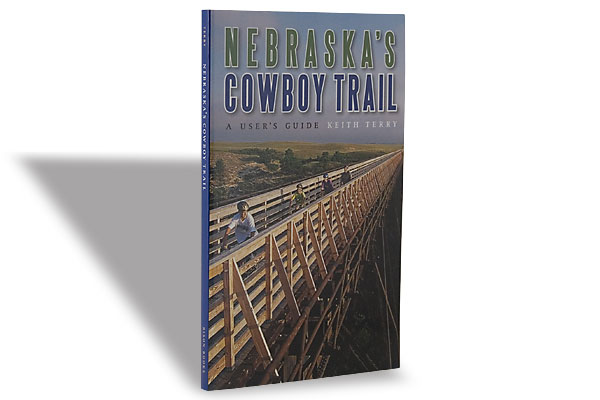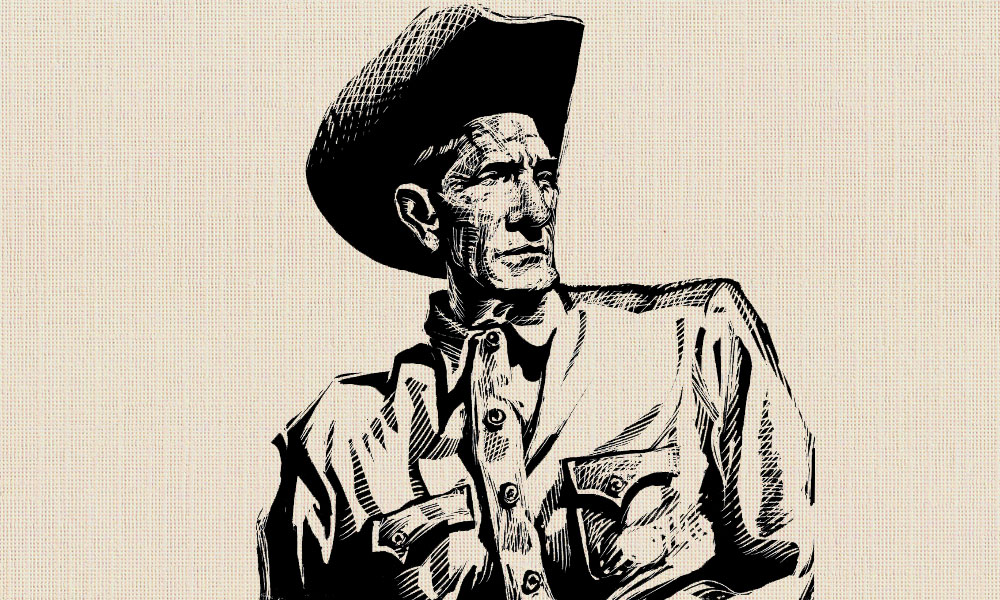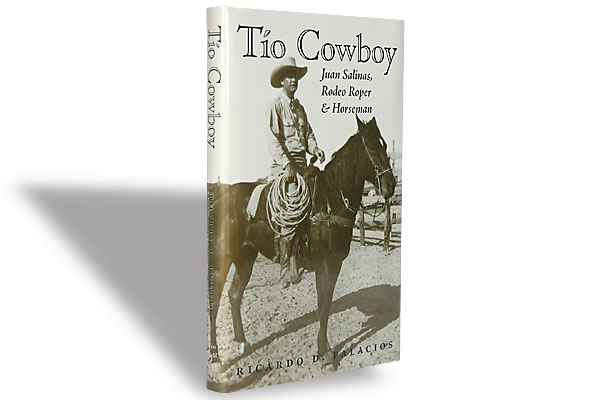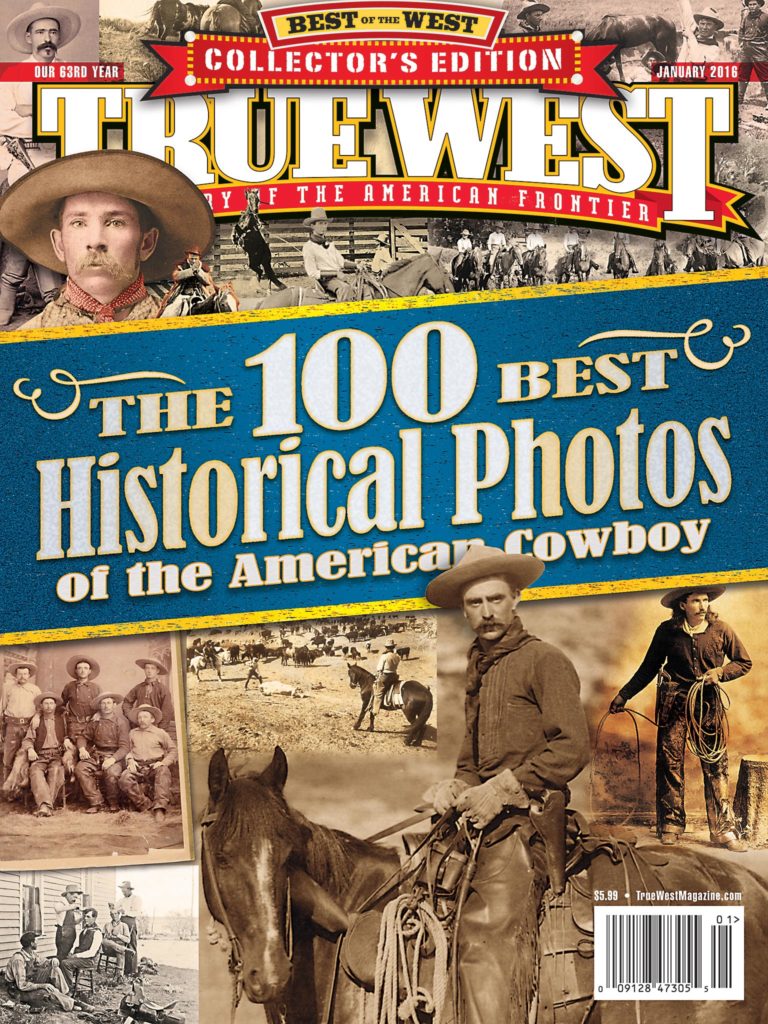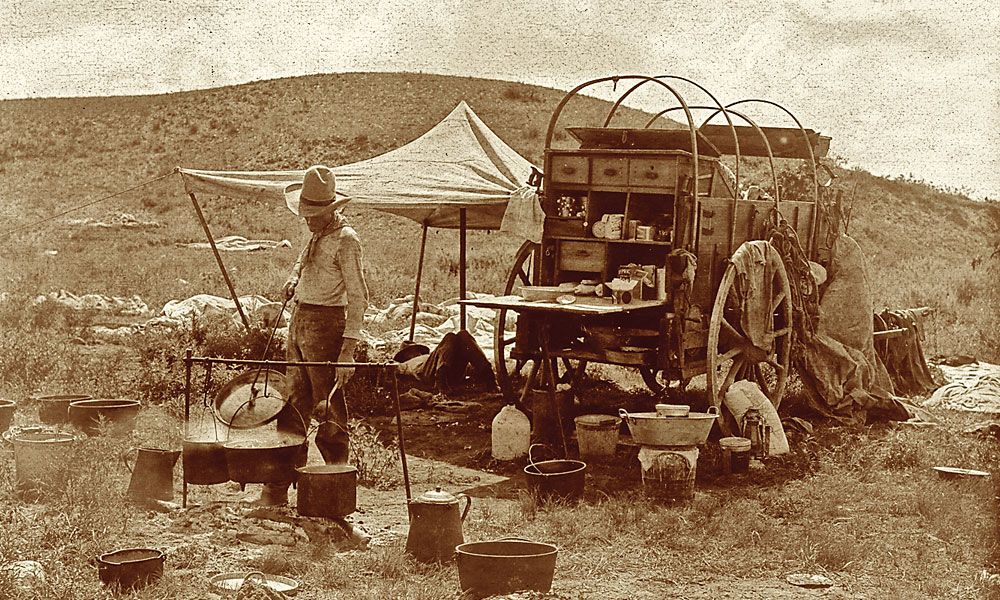
– BY Erwin E. Smith / Courtesy Library of Congress –
After spring roundups, cowboys herded their cattle out on the trail, heading to a cowtown with a railroad station where the cattle could be corralled and loaded for market. Along the trail, cowboys ate meals consisting of beef, beans, biscuits, dried fruit and coffee.
As cattle drives increased in the 1860s, cooks found it harder and harder to feed the 10 to 20 men who tended the cattle. That’s when Texas Ranger-turned-cattle rancher Charles Goodnight invented the chuckwagon. In 1866, he and rancher Oliver Loving created the Goodnight-Loving Trail to move their cattle to railheads.
The chuckwagon and its cook became the lifeblood of the cowboy during roundups and while on the trail. Some cooks were great; others got by with providing the basics. Most ranch owners wanted their cowboys fed well so that they would stay healthy along the trail.
“We had a good one. ‘Dutch’ Meyers took pride in his work,” recalled Avery Barrow, a cowboy born in Texas in 1860, about his camp cook. “To get him doing extra touches, all we had to do was swell him on his meals. He would raise like a boil and take extra pains fixing the chuck….
“Dutch made some of the best sourdough bread I have ever ate. Bread, beans, stewed dried fruit was what we lived on. The cookie would fix the beans different ways. He could fix a Boston baked dish of beans that was fitting to eat, also fried pies out of the stewed fruit.
“When it comes to broiling steaks, ‘Dutch’ had the knack down pat. He would get his campfire hot, slap the steaks into it for a minute, which seared them on the outside. Then he would pull the meat away and let it cook slowly. Of course the beef was off of a fat yearling, a good meat to start off with.”
Chuckwagon staples had to travel well and not spoil. The list included flour, sourdough, salt, brown sugar, beans, rice, cornmeal, dried apples and peaches, baking powder, baking soda, coffee and syrup.
Fresh beef was the main meat, but cowboys also hunted wild game and fish along the trail and during roundups. The cook used bacon grease to fry everything, but it also served as the main meat when supplies ran low.
W.H. Thomas, who made his way to Graham, Texas, in the 1890s, worked for cattle rancher Lyt Johnson: “Eating around a chuckwagon is the best eating in the world. Nothing special, but good solid food like whistle berries, beef, sow belly strips and some of the best sop in the world can be made from the grease you get from fried sowbelly…. If everything was favorable, you could depend on a slice of pie two or three times a week, sometimes more.”
After being on the trail for three or four months, cowboys were tired of eating the same old grub. Once they hit the cowtowns and got paid, they enjoyed a nice dinner in a restaurant.
*** R E C I P E ***
~ Spring Lamb Potpie ~
1 1⁄2 pound lamb
1⁄2 t. salt
1⁄4 t. freshly ground pepper
2 T. butter
1 onion, diced
1⁄3 cup flour
1 cup chicken stock
1 pint canned tomatoes, strained
1 T. fresh parsley, chopped
1 piecrust
Cut the lamb into cubes, and add salt and pepper. Melt the butter in a frying pan over medium-high heat. Fry lamb until browned on all sides. Remove from the pan. Fry the onions until tender, about 10 minutes. Add flour, cook for one minute, then add the stock. Add the tomatoes and cook over medium heat for five minutes or until thickened. Add the lamb and stir. Place the lamb filling in a baking dish and top with the parsley. Cover with the piecrust and bake at 400°F for about 25 minutes.
*****
Recipe adapted from Nebraska’s Omaha World-Herald, April 30, 1899
Sherry Monahan has penned Mrs. Earp: Wives & Lovers of the Earp Brothers; California Vines, Wines & Pioneers; Taste of Tombstone; The Wicked West and Tombstone’s Treasure. She’s appeared on the History Channel in Lost Worlds and other shows.


